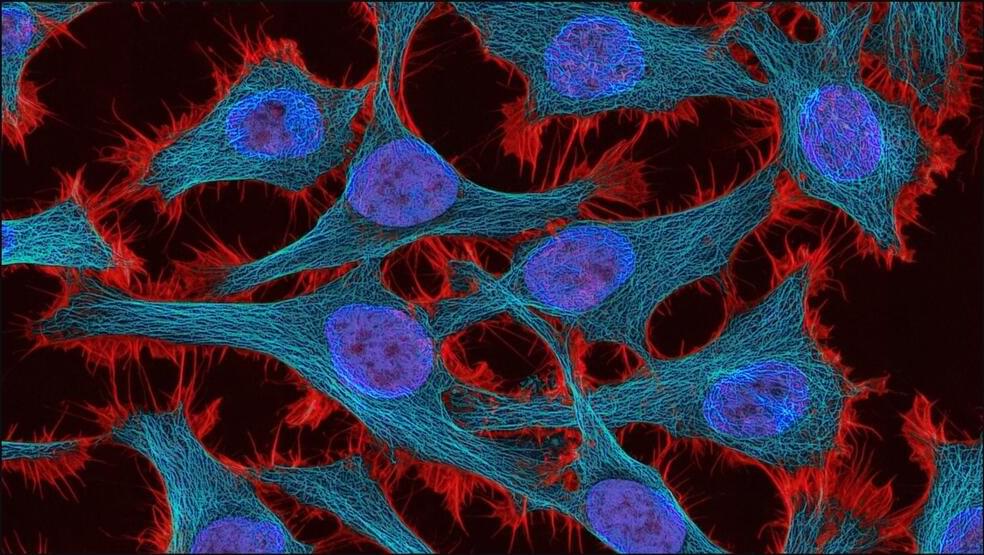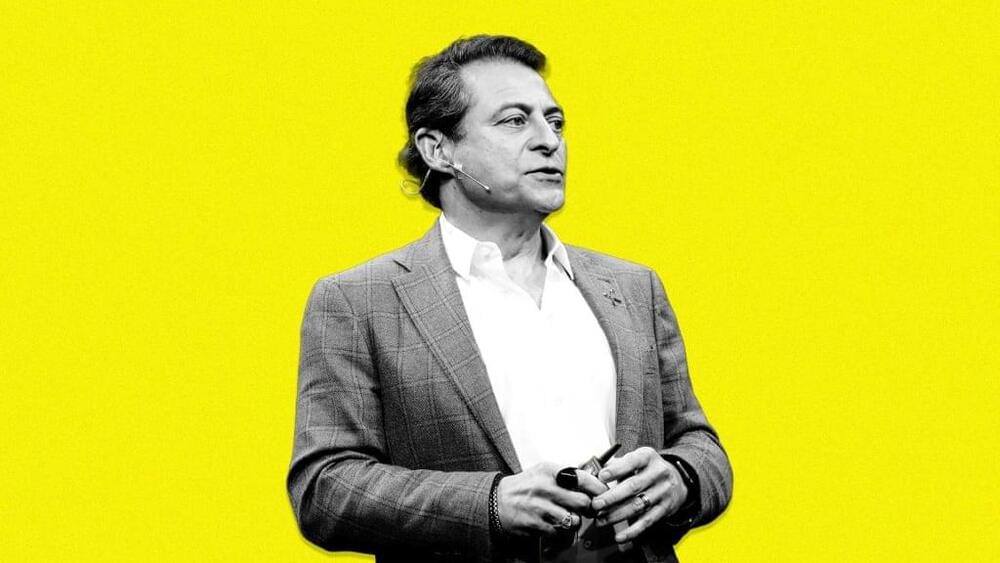Basically a full day AI course crammed into 18 mins of drawing & talking. Target audience: Everyone. Covers questions like What is generative AI, how does it work, how do I use it, what are some of the risks & limitations. Also covers things like autonomous agents, the role of us humans, prompt engineering tips, AI-powered product development, origin of ChatGPT, different types of models, and some tips about mindset around this whole thing. Here is the full drawing: https://blog.crisp.se/wp-content/uplo…
Category: robotics/AI – Page 741

AI outperforms humans in standardized tests of creative potential
In a recent study, 151 human participants were pitted against ChatGPT-4 in three tests designed to measure divergent thinking, which is considered to be an indicator of creative thought.
Divergent thinking is characterized by the ability to generate a unique solution to a question that does not have one expected solution, such as “What is the best way to avoid talking about politics with my parents?” In the study, GPT-4 provided more original and elaborate answers than the human participants.
The study, “The current state of artificial intelligence generative language models is more creative than humans on divergent thinking tasks,” was published in Scientific Reports and authored by U of A Ph.D. students in psychological science Kent F. Hubert and Kim N. Awa, as well as Darya L. Zabelina, an assistant professor of psychological science at the U of A and director of the Mechanisms of Creative Cognition and Attention Lab.

AI could find out when cancer cells will resist chemotherapy
In a new study, scientists have been able to leverage a machine learning algorithm to tackle one of the biggest challenges facing cancer researchers — predicting when cancer will resist chemotherapy.
But in what could be a game-changer, scientists at the University of California San Diego School of Medicine revealed today in a study that a high-tech machine learning tool might just figure out when cancer is going to give the cold shoulder to chemotherapy.
Teaming up against cancer
When cells divide, even the cancer ones, they rely on complex molecular machinery that helps them copy their DNA. Chemotherapy drugs usually put a stop to this DNA-copying mechanism, especially in fast-growing tumor cells.
Is Artificial Consciousness Possible? #psychologicalscience #humanintelligence #mind
The past decade’s breathtaking progress in artificial intelligence research saw robots learn to walk and improve image recognition accuracy from 50% to 91%. The prospect of artificial consciousness creates a new urgency for understanding what consciousness is.

Humanoid robot-maker Figure partners with OpenAI and gets backing from Jeff Bezos
Why do I find this so alarming?
ChatGPT-maker OpenAI is looking to fuse its artificial intelligence systems into the bodies of humanoid robots as part of a new deal with robotics startup Figure.
Sunnyvale, California-based Figure announced the partnership Thursday along with $675 million in venture capital funding from a group that includes Amazon founder Jeff Bezos as well as Microsoft, chipmaker Nvidia and the startup-funding divisions of Intel and OpenAI.
Figure is less than two years old and doesn’t have a commercial product but is persuading influential tech industry backers to support its vision of shipping billions of human-like robots to the world’s workplaces and homes.

Grey Swans on the Horizon; AI, Cyber, Pandemics, and ET Scenarios
Back in 2007, statistician Nassim Nicholas Taleb described a “Black Swan” as an occurrence that “is an outlier,” meaning it deviates from accepted wisdom. Accordingly, black swans are unanticipated, and uncommon, and can result from geopolitical, economic, or other unanticipated occurrences.
Because of major advances in computing, we can now anticipate, and, with applied risk management, help contain what was described as Black Swan events. So, in effect, with predictive analytical capabilities enabled by artificial intelligence, most Black Swans have now morphed into what is now termed Grey Swan events.
An industry leader in the insurance sector, Aon, defines Black Swan events as unexpected, unanticipated shocks. They depict unexpected but predicted surprises that are known as “Grey Swan events.” Similar to Black Swans, they can have a profound effect.


Can we control superintelligence? With Yoshua Bengio #artificialinteligence
Azeem speaks with Professor Yoshua Bengio. In 2018, Yoshua, Geoff Hinton and Yann LeCun were awarded the Turing Award for advancing the field of AI, in particular for their groundbreaking conceptual and engineering research in deep learning. This earnt them the moniker the Three Musketeers of Deep Learning. I think Bengio might be Aramis: intellectual, somewhat pensive, with aspirations beyond combat, and yet skilled with the blade.
With 750,000 citations to his scientific research, Yoshua has turned to the humanistic dimension of AI, in particular, the questions of safety, democracy, and climate change. Yoshua and I sit on the OECD’s Expert Group on AI Futures.
